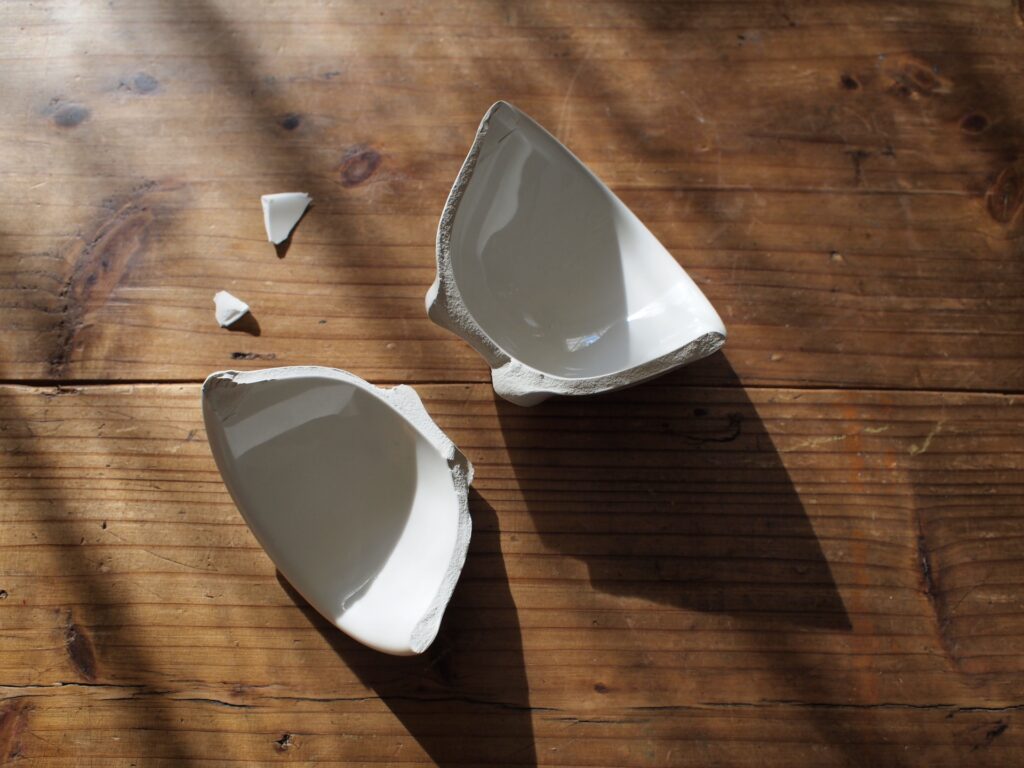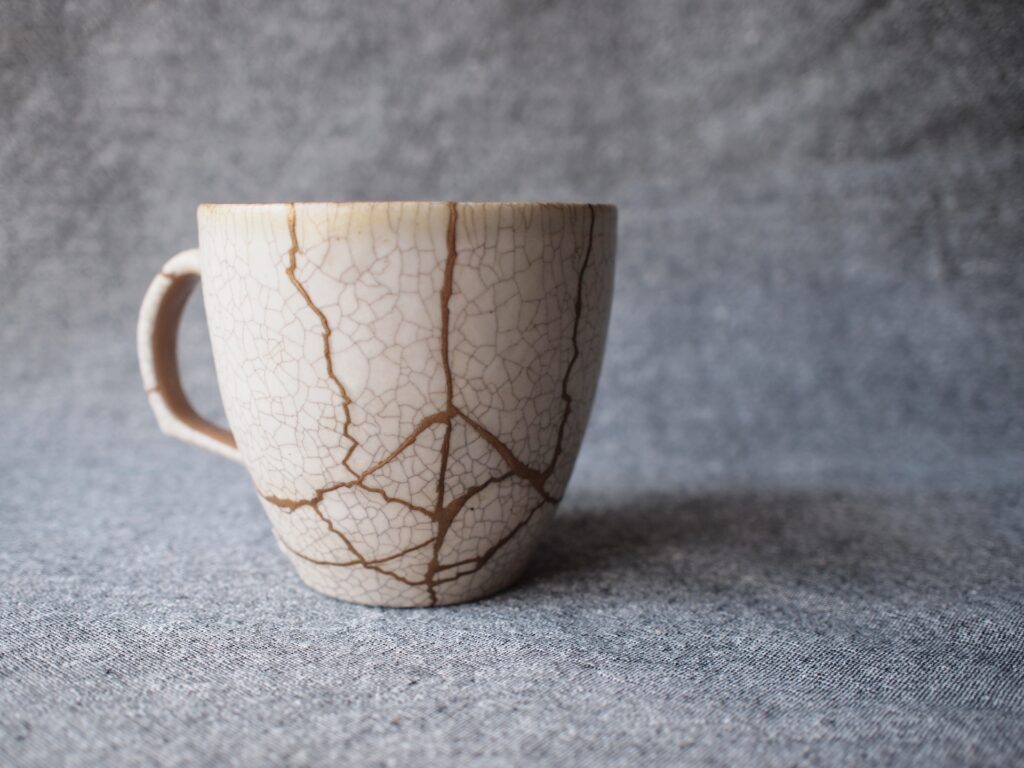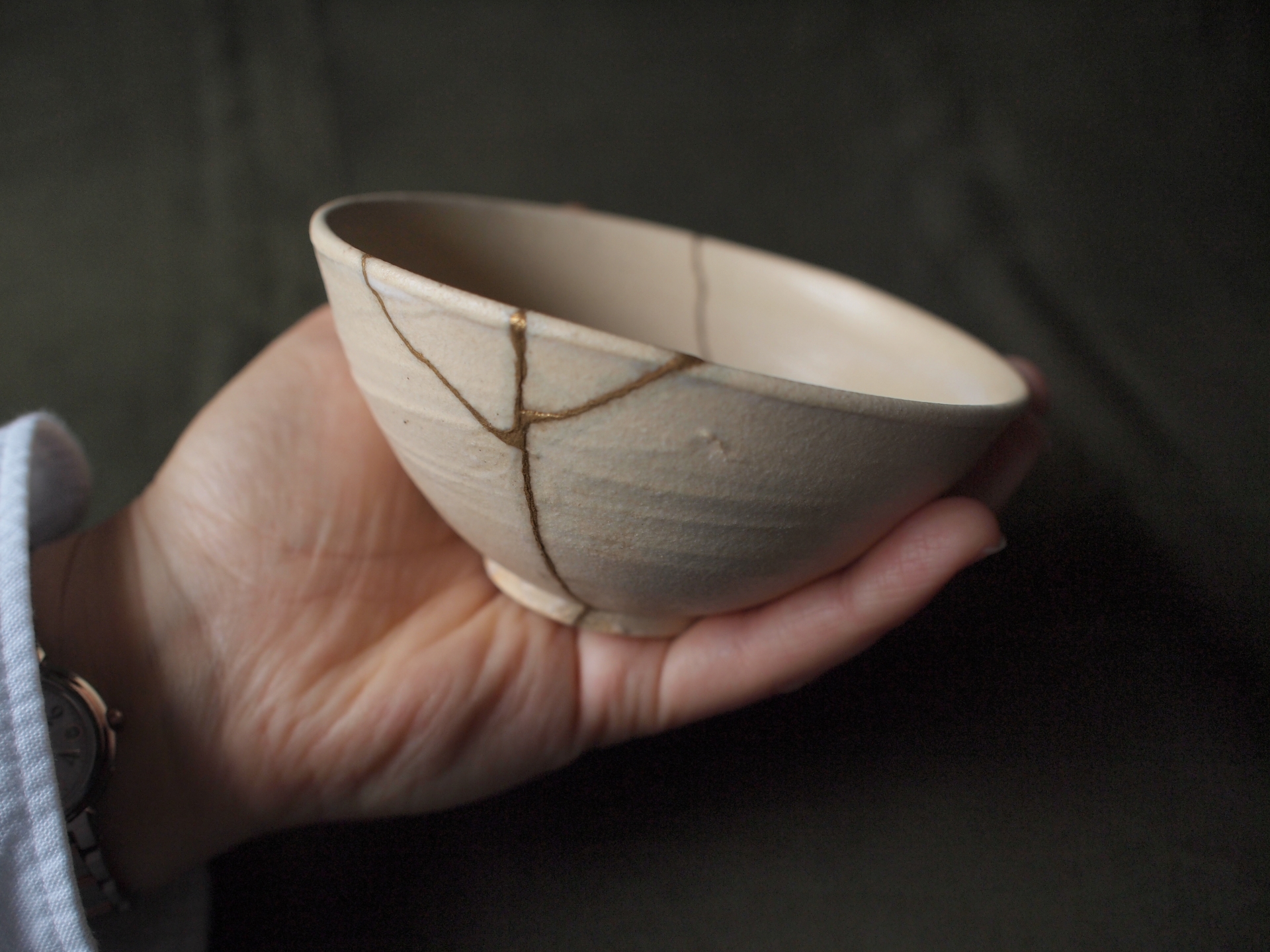Konnichiwa! In a world that often idolizes perfection, there’s a Japanese art form that celebrates flaws and imperfections like no other – Kintsugi. So, What is Kinstugi? Let’s explore this wabi-sabi art form!
Affiliate Disclaimer: I only recommend products I would use myself and all opinions expressed here are our own. This post may contain affiliate links that at no additional cost to you, I may earn a small commission. As an Amazon Associate I earn from qualifying purchases.
What is Kintsugi?
Derived from the words “kin” (golden) and “tsugi” (joinery), Kintsugi is the centuries-old practice of repairing broken pottery with lacquer mixed with powdered gold, silver, or platinum. But it’s more than just a method of restoration; it’s a philosophy that teaches us valuable lessons about resilience, acceptance, and beauty in imperfection.

Planning a trip to Japan?
History and Origins of Kintsugi
Kintsugi traces its roots back to the late 15th century, during Japan’s Muromachi period. Legend has it that the technique originated when a Japanese shogun sent a damaged Chinese tea bowl back to China for repairs. Disappointed with the unsightly metal staples used in the repair, Japanese craftsmen sought a more elegant solution, thus giving birth to Kintsugi.
Philosophy of Kintsugi
At its core, Kintsugi embodies the Japanese philosophy of wabi-sabi, which cherishes the beauty of impermanence and imperfection. Instead of disguising or hiding flaws, Kintsugi accentuates them, turning broken pieces into exquisite works of art. The repaired pottery not only retains its functionality but also gains a new aesthetic value, becoming a symbol of resilience and transformation.

Symbolism and Meaning of Kintsugi
Each crack and fracture in a Kintsugi piece tells a story – a story of breakage, repair, and renewal. The gold-filled seams not only highlight the history of the object but also symbolize the idea that scars can be sources of strength and beauty. In a world obsessed with flawlessness, Kintsugi reminds us that our imperfections are what make us unique and valuable.

What Does Kintsugi Teach Us About Life?
While Kintsugi traditionally applies to pottery, its principles can be applied to all aspects of life. Whether it’s repairing broken relationships, overcoming personal struggles, or finding beauty in our own imperfections, the lessons of Kintsugi are universal.

A How To Guide on the Art of Kintsugi
While it requires skill and patience, the process can be broken down into the following general steps that you can follow with a Kinstugi repair kit:

Wrapping up Kintsugi
What is Kintsugi? In a world that often seeks perfection, Kintsugi stands as a powerful reminder that true beauty lies in embracing our imperfections. As we navigate the ups and downs of life, let us remember the wisdom of this ancient art form – that our scars are not signs of weakness, but testaments to our strength and resilience. Like the delicate pottery repaired with precious metals, may we too shine brightly, illuminated by the golden seams of our own transformation.
Disclaimer: If you use the link on this page to purchase travel insurance, we will receive a fee from Freely, a brand of Cover-More Insurance Services Pty Limited ABN 95 003 114 145 (AFSL 241713) (Cover- More). We do not act for Cover-More or Freely. The information provided is only on the availability of Freely products. We do not give advice & the information provided is not intended to give an opinion or recommendation regarding the product. For information on how to contact Cover-More or Freely refer to the PDS, FSG & TMD which can be found on the Freely website.


